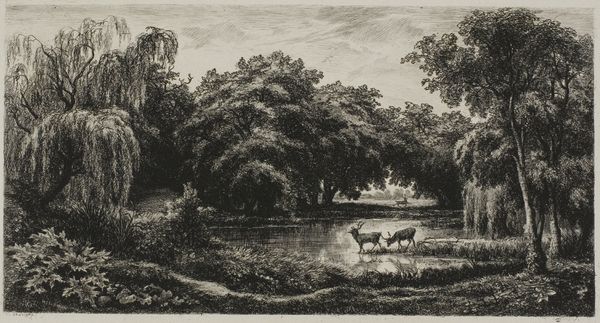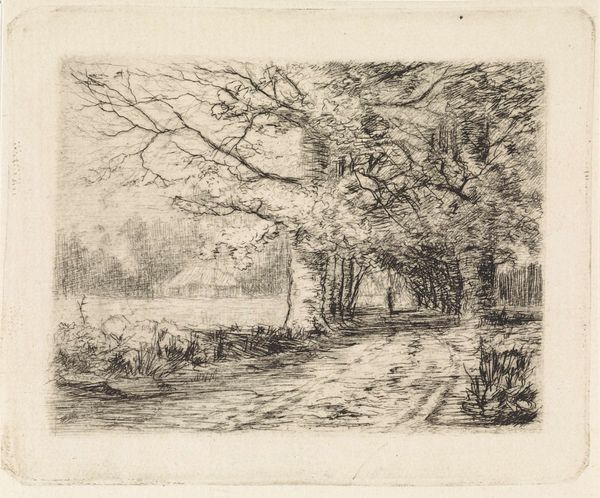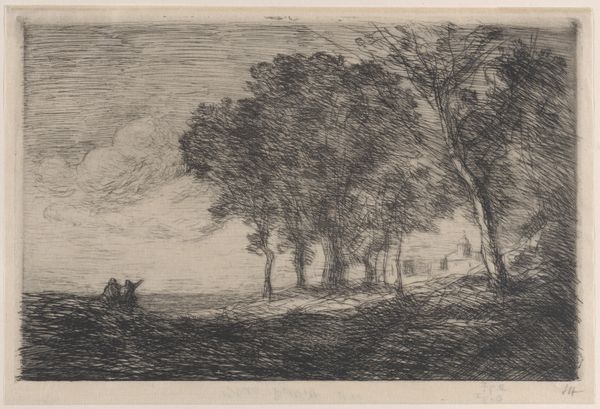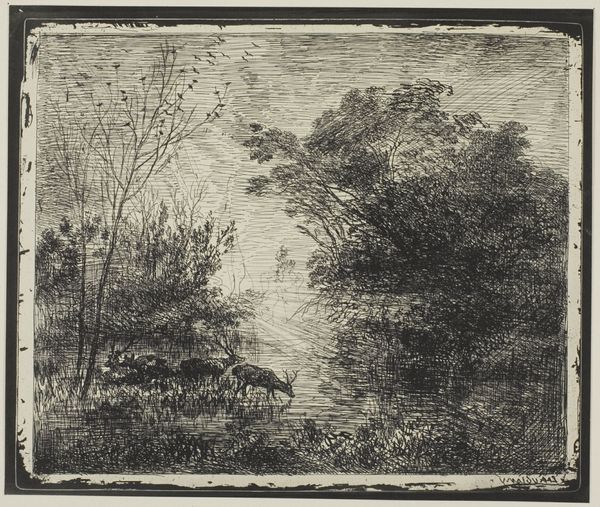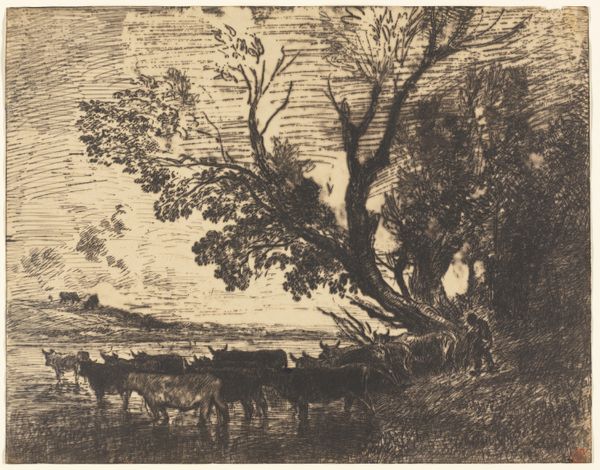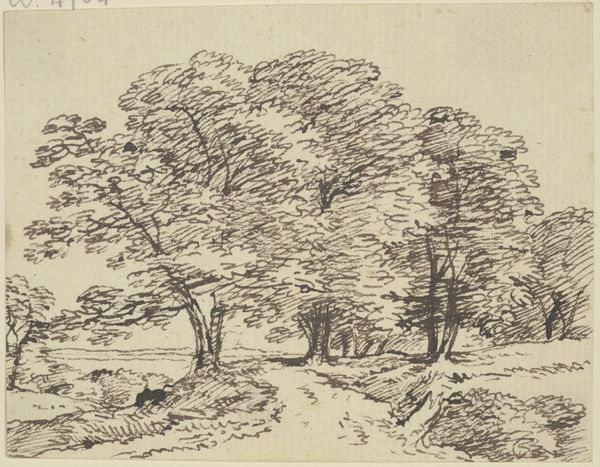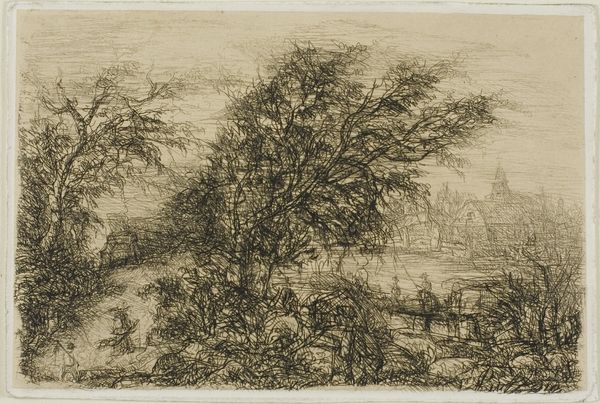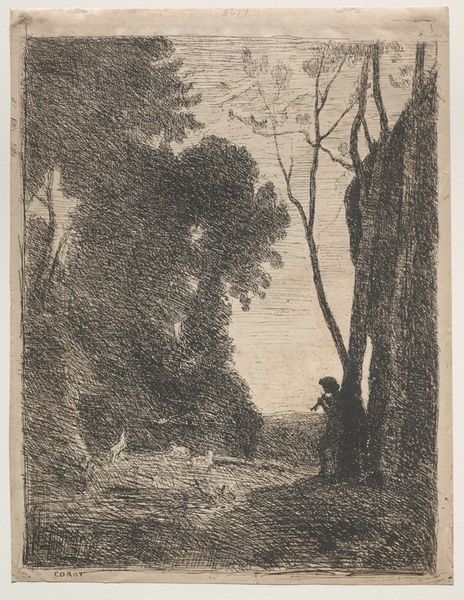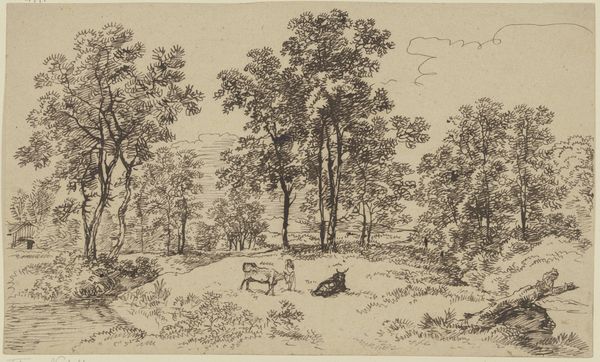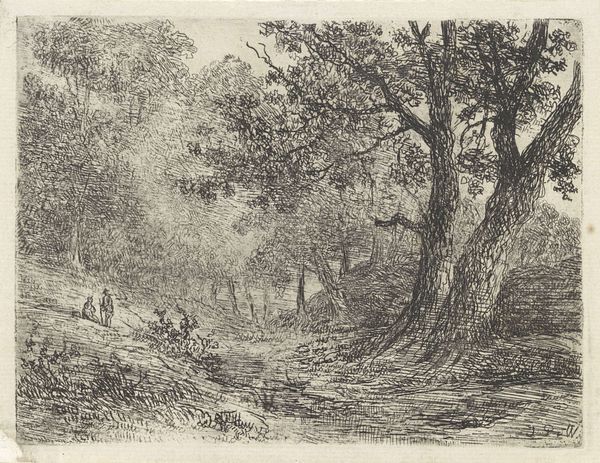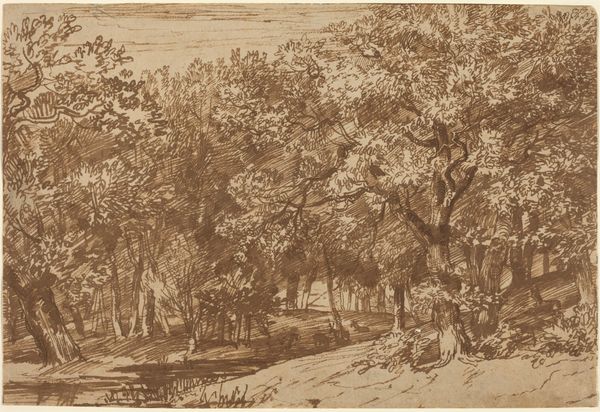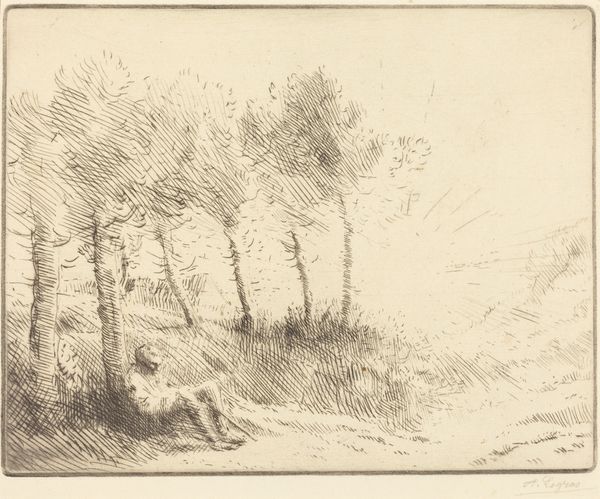
drawing, print, etching, paper
#
drawing
# print
#
etching
#
landscape
#
etching
#
paper
#
genre-painting
Dimensions: 156 × 190 mm (image); 167 × 203 mm (sheet)
Copyright: Public Domain
Curator: Here we have "Cows in a Wood," an etching by Charles-Francois Daubigny, created in 1862. It’s currently held here at The Art Institute of Chicago. Editor: My first thought is that this work is all about texture. Look at the density of those lines—it almost feels like I could reach out and feel the rough bark of the trees or the coarse hair of the cows. Curator: Yes, and that texture, particularly in how he renders the trees, relates to shifting social values of the time. You see, during the mid-19th century, there was this increasing cultural interest in connecting with nature, moving away from solely valuing manicured landscapes toward embracing the rawness of the natural world. Daubigny, aligned with the Barbizon school, captures that ethos perfectly. His technical approach, that etching technique, allows him to foreground the often-ignored parts of landscapes like the common cow. Editor: Precisely! And the cows themselves act as such powerful symbols, especially within this wooded space. Consider their historical connection to cycles of life and death, the way societies have constructed the idea of 'domesticity'. They’re framed as peaceful here but were undeniably tethered to specific ideas about ownership, production, even femininity itself in the societal context of the 19th century. They invite a broader consideration about agrarian labor and our place in the world. Curator: Absolutely. We see in his style echoes of 17th century Dutch landscapes, but Daubigny infuses it with the sensibilities of his era by depicting cows at leisure rather than a glorifying agricultural labor, he shifts away from older ideals. The cows are active in this scene, and they remind us about labor movements, land ownership and questions about exploitation. Editor: Also, the placement is interesting: those intertwined, almost suffocating tree branches, contrasting the clear meadow give this composition a kind of dark versus light opposition—the wild versus tamed that existed at this historical period. Curator: Agreed. Ultimately, viewing "Cows in a Wood," reminds us how seemingly simple representations of nature can really be repositories of complex cultural histories. Editor: Right, it makes one rethink not only this specific landscape tradition, but its ongoing legacy on how we value nature today.
Comments
No comments
Be the first to comment and join the conversation on the ultimate creative platform.
